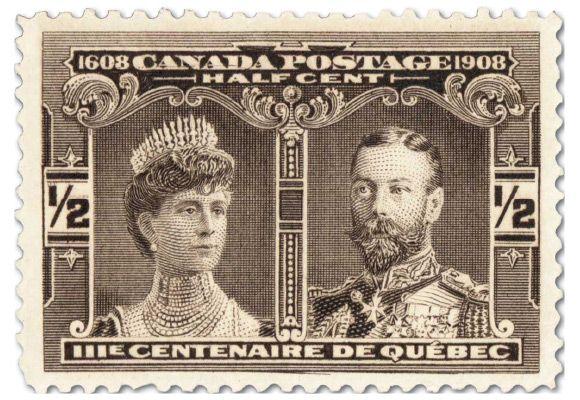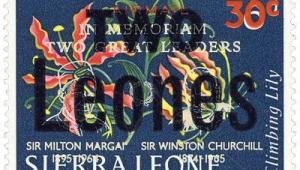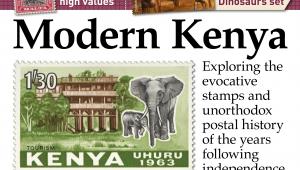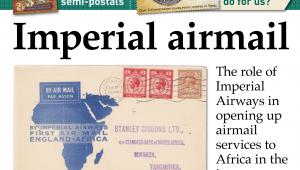Champlain celebration

Champlain celebration
Canada 1908 Quebec Tercentenary ½c sepia, portraying the Prince and Princess of Wales
1908 was a champagne moment in Canada’s history, and the Tercentenary of Quebec was celebrated by a fine recess-printed set of portrait and pictorial stamps.
The first successful European colony in mainland Canada had been established in 1608, when the French navigator Samuel de Champlain retraced the voyages of discovery made more than 70 years earlier by his fellow countryman Jacques Cartier. A small settlement at the confluence of the St Lawrence and St Charles rivers, initially simply named l’Habitation, would eventually grow into Quebec City.
The story is part of the bedrock of Canadian history, so naturally the Tercentenary of Quebec in 1908 was celebrated with gusto. A series of pageants and parades was augmented by a royal visit, and a set of commemorative stamps was issued.
The American Bank Note Company held the contract for producing Canadian stamps (on the proviso that they be printed in Ottawa), and the challenge of designing the new issue fell to its General Manager, the Cuban-born José Antonio Machado.
A set of eight was planned, with values ranging from ½c to 20c. With a denomination in English, a commemorative inscription in French and the dates ‘1608’ and ‘1908’ to include on each design, Machado decided upon a double-size landscape format, with four stamps depicting historical scenes and four carrying double portraits.
The scenes featured Cartier’s arrival at Quebec on the 20c, Champlain’s departure from France on the 15c, Champlain’s house in Quebec on the 5c, and a view of the city in 1700 on the 10c.

The 20c dull brown showed Jacques Cartier’s flotilla of ships arriving at the future site of Quebec in 1535
The royal visitors, the Prince and Princess of Wales (later King George V and Queen Mary) were the subjects of the ½c sepia, while the 2c carmine was reserved for King Edward VII and Queen Alexandra.
Cartier and Champlain were remembered together on the 1c blue-green, while the 7c olive-green pictured the French General Louis-Joseph de Montcalm and the British General James Wolfe, who contested the Battle of Quebec in 1759 and both died at the scene.
Four different engravers were engaged to create the stamps, which were recess-printed in sheets of 100, perforated 12. Four plates were used for the 1c and 2c values, which had the biggest print-runs, and two for the 5c stamp, while the others were each printed from a single plate.
Issued on July 16, 1908, and remaining on sale for some time after after the festivities had ended, the Quebec Tercentenary set provides much philatelic interest. Most of the printings were on white wove paper, although the 1c, 2c and 5c also exist on toned paper.
All values can also be found imperforate, probably from imprimatur sheets removed from the Canadian Post Office archives. There are die proofs and plate proofs on the philatelic market, and specialist collectors are aware of some notable re-entries, not all of them catalogued.
Report by John Winchester
Read more great articles in Stamp Magazine August 2017
For more great content subscribe to Stamp Magazine today















